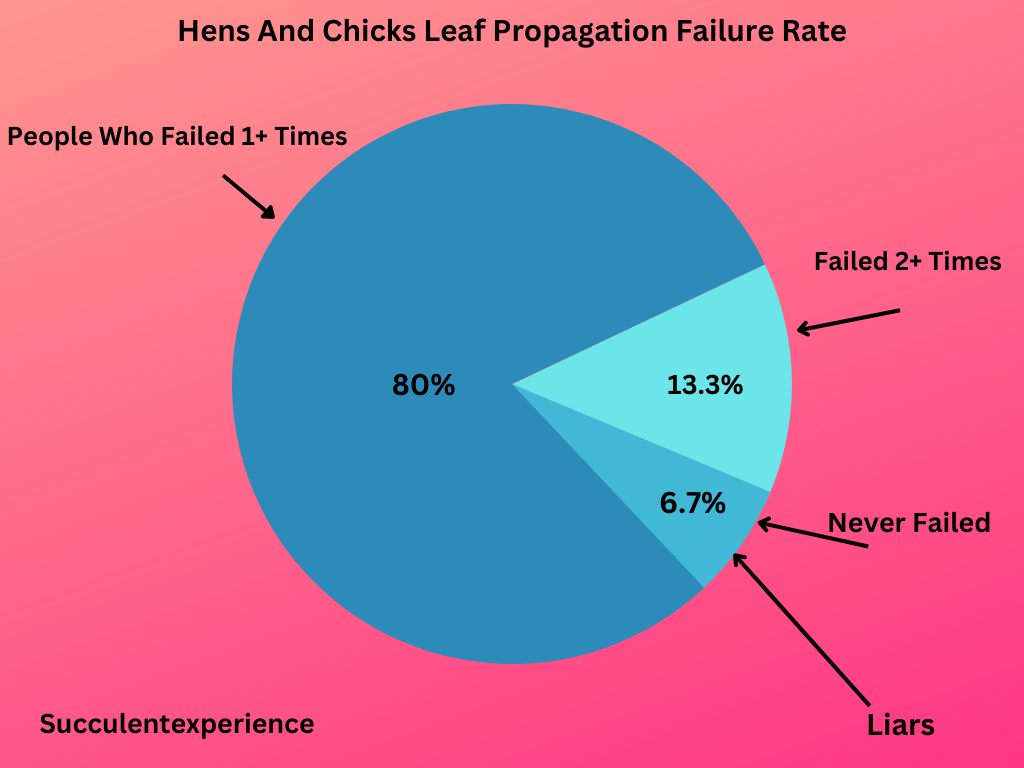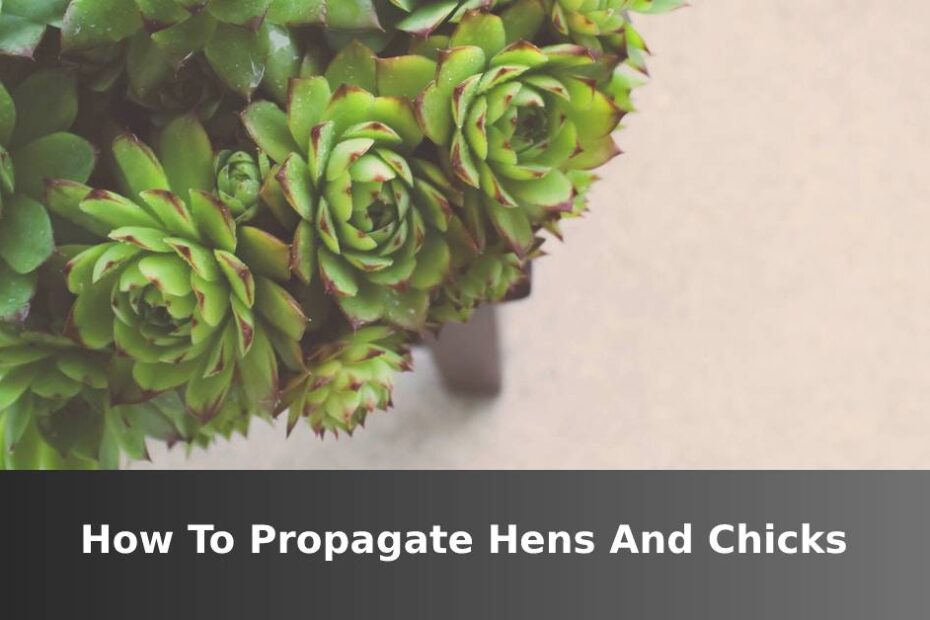Hens and chicks, Houseleeks, Semps or Sempervivum, no matter what you call these succulents, they sure are very interesting all around in terms of looks and how they act. Hens and chicks can be propagated in many ways with offsets being the most popular, but there are others ways you can do this as well.
Maybe this is why you have stumbled here as you want to multiply your Hens and Chicks succulents as much as possible so you can share with others as gifts or just grow your collection.
All from one Sempervivum, without having to spend another dime.
So if you just want to know how to propagate Hens and chicks then let’s get started on some different methods you can use for your Hens and chicks propagation experience.
Hens and chicks propagation from offsets
The very first way you should try to propagate Hens and chicks is by using offsets as this is most certainly the easiest method and has the highest success rate.
Hens and chicks can be propagated in a variety of ways, but using offsets is the most popular way.
To get started, you should wait for the springtime as this is the best time of the year to go through with Sempervivum propagation.
The reason for this is because your hens and chick plant will have plenty of time to grow starting from this time and also the main succulent will have formed plenty of offsets come springtime.
So when it comes to propagating hens and chicks from offsets, the first thing you will notice is that the offsets will be formed on a stolon which connects the offsets to the main plant.
Once your Sempervivum offsets are 1.5 to 2 inches in diameter, you will know they are ready to be propagated and ultimately transplanted.
So just go ahead and twist one or more offset away from the main hen or use a sharp knife to cut it away if it seems too tough to pull away.
This can be a good sign though.
Now that you have an offset separated, let it dry and heal for a few days also known as callusing over.
Once the offset is healed, you can go ahead and prepare a container with quality cactus and succulent soil that also comes with a drainage hole.
Now just plant the Sempervivum offsets roots directly into the soil with the offset sitting firmly on the top of the soil.
You should also fill the top of the soil with some mineral grit such as Perlite for maximum drainage as Hens and Chicks succulents don’t like to be moist.
From here you can place the container in a spot where it gets a good amount of indirect light on a daily basis and water lightly when the soil becomes dry.
Only water when the soil becomes completely dry by the way.
After a few weeks you will notice stronger roots have formed and you can gradually introduce light and normal care.
That’s really all there is to propagating hens and chicks from offsets.
How to propagate hens and chicks from leaves
Although propagating hens and chicks from leaves is possible, don’t get your hopes too high as it is pretty unpredictable if they will root or not.
Propagating from leaf already has a low success rate as is and doing it from Sempervivums is going to be a lot harder than usual.

So with that in mind here is how you can have the chance to do it.
Once again the good time to try and propagate Sempervivum from leaves is during the spring when you have some healthy leaves already formed.
From here you want to twist and pull away several healthy leaves from your hens and chicks succulent, while making sure you don’t tear the leaves as you want full ones to use.
High quality gardening shears or a clean sharp knife will help prevent tearing these leaves as this is super important by the way.
Now let the leaves callus over for a few days so they have a chance to dry to prevent problems from occurring.
During this time you can prepare a container or ideally a tray full of succulent and cactus soil that has enough space to house several hens and chicks leaves at a time.
Once the leaves are ready to go, place all of the Sempervivum leaves on top of the soil with the base of each leaf making full contact against the soil.
Make sure to space them evenly as well.
Now place the container or tray in a location where it will get indirect light on a consistent basis and mist the soil enough to keep it moist but not soaked.
After a month or so has passed you may notice roots have formed and a baby Sempervivum will sprout above the soil, eventually overtaking the leaf that was propagated.
The leaf will also wither away on it’s own so don’t worry about that.
That’s really all there is to it when it comes to hens and chicks leaf propagation.
Just don’t expect a huge success rate and you will be good to go.
How to propagate Hens and chicks from stem
Lastly, you can propagate hens and chicks succulents from stem cuttings which is actually pretty simple and has a high success rate.
To get started you will want to find a healthy stem to use from the main part of the Sempervivum succulent.
Once you have your pick, use some sharp gardening pruning shears to cut away the stem while keeping a few leaves on the stem.
Just make sure there is at least 2 inches of stem left at the bottom that is free of leaves.
Next let the Sempervivum cutting dry and callus over for a few days at least.
Once the stem is dry, you can plant the stem 2 inches deep into it’s own container of succulent and cactus soil, while making sure there are no leaves touching or underneath the soil.
Feel free to add in some grit such as perlite as well for maximum drainage, along with a container that has a drainage hole.
Place your container in a location that gets indirect light and water lightly whenever the soil becomes dry and only water again when the soil is completely dry.
After some time you will once again see strong roots forming and that is how you will know that you did a good job.
That’s all there is to propagating hens and chicks from stem cuttings.
Pour conclure
So there you have it.
A few different ways you can propagate hens and chicks succulents that will accommodate even the newest of succulent owners.
Who knows, maybe you will be very good at it in the near future.
